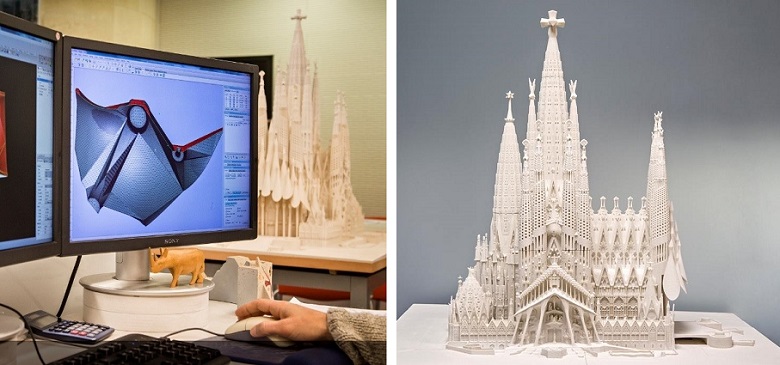When you think of the word architecture, what comes to mind? Maybe it’s quaint European cathedrals or modern buildings that look like they could be straight out of science fiction. Whatever your architectural tastes, you can probably agree that the world is becoming more and more digitized every day. The architecture industry has already been revolutionized by computer-aided design and construction software; however, things are about to get even better.
Architecture is one of the best industries to be a part of in today’s digital age. Architects shouldn’t be restricted to designing in a certain way or in a particular space. Architecture should be able to exist anywhere at any time. That’s why 3D printing is such a game changer for the industry as a whole. There are so many benefits of using 3d printing in architecture, and here we will go over some of them so you can see how it might work for your business.
Reduced Cost
One of the main benefits of 3d printing in architecture is the reduced cost of creating and printing a model. With 3D printing, you don’t need to use expensive construction equipment like a CNC machine or a laser, which drastically reduces the cost of making the model.
Also, architects usually have to purchase an enormous amount of paper and inks. 3D printing reduces the need for these materials and also makes it possible to print models on demand without worrying about a paper or ink supply running low.
Flexibility
Architects now have the opportunity to create models that have an incredible amount of flexibility. This flexibility is achieved through the use of a special resin that has a high degree of elasticity. Once an architect has a design they are happy with, they can 3d print the model and have the ability to scale it to any size and shape they wish.
This is a huge advantage for architects, who no longer need to be bound by the confines of a particular size or shape for the model. They can create a model that is as large or small as they want it to be.
Better Quality
Another major benefit of 3d printing in architecture is the better quality of the model. With 3d printing, you don’t have to worry about the quality of the print. There are no flaws in the printing process that can affect the quality of the model. This is an important factor for architects who need to use the models they create for inspections, drawings and plans.
3d printing in architecture also helps to reduce the amount of errors that are made in the design process by providing a model that has less chance of being flawed and therefore less chance of being rejected or needing to be redesigned.
Comfort And Convenience
Architects finally have the option to design models that are convenient and comfortable to use. Current models often need to be printed in two dimensions, but with 3d printing in architecture, architects can create models that can be used in three dimensions.
This can be a huge advantage for architects who use models to simulate their designs or create models for clients that encourage more physical activity. Models created with 3d printing can be more interactive and encourage more activities such as climbing, walking and touching.
Independence
Another major benefit of 3d printing in architecture is the independence it affords architects. There are likely to be many times throughout an architect’s career that they need to create a model of a specific size and shape. There may even be times when clients want a specific model.
With 3d printing in architecture, architects have the ability to create models that are not based on other models. Thus, they are able to create a model that is more customized and specific to the client’s needs.
Future-Proofing For The Future
Perhaps the most important benefit of 3d printing in architecture is the future-proofing it provides. As architects, you want to make sure that you are creating models that are future-proof. That is, you want to make sure that your designs can be easily changed or expanded for the next generation of buildings.
The beauty of 3d printing is that it is a technology that will be around for decades to come. This means that your designs can be easily changed or expanded for the next generation of buildings. You don’t have to worry about the fact that the technology will be obsolete in 10 years because it will be around for decades to come.
Conclusion
The use of 3d printing in architecture has had a positive impact on the industry in every conceivable way. The reduced cost of models, better quality of models, the ability to create models with greater flexibility and the future-proofing provided by the technology have all contributed to make 3d printing a hugely beneficial technology to be used in architecture.
The more architects and companies that begin using 3d printing, the more likely it is that the benefits of using the technology will be felt by the entire industry. Architecture has the chance to be one of the industries that leads the way in the push for future-proofing with the use of 3d printing.






